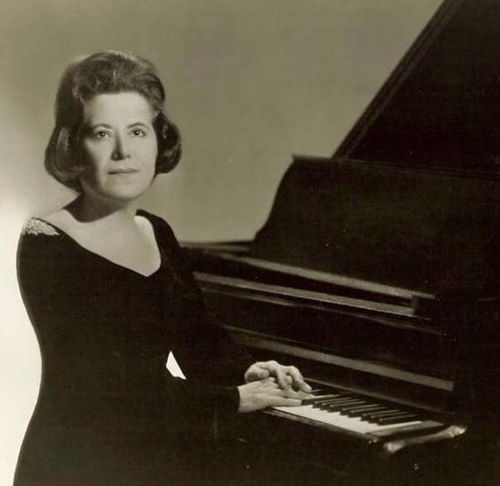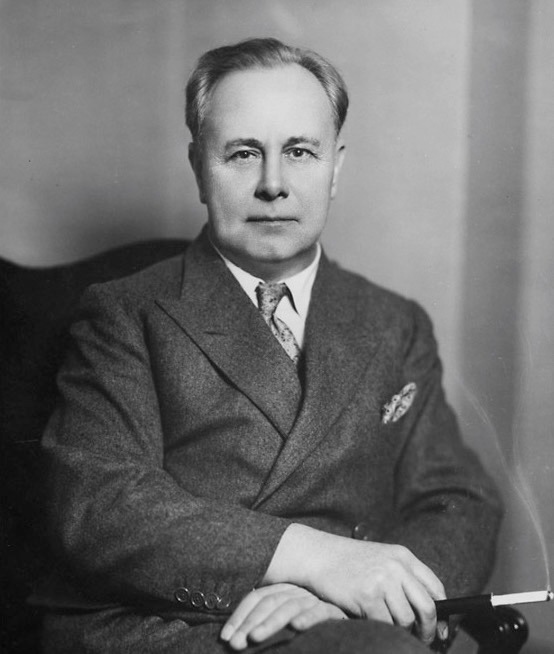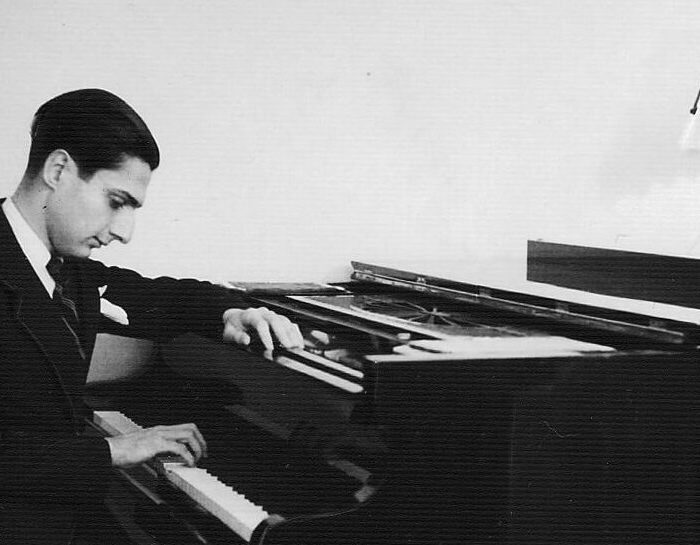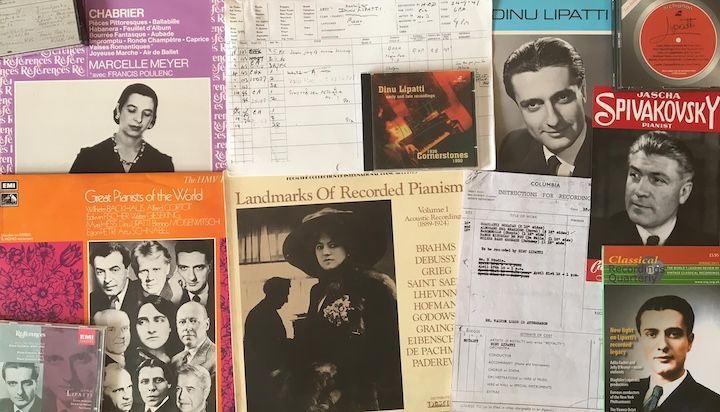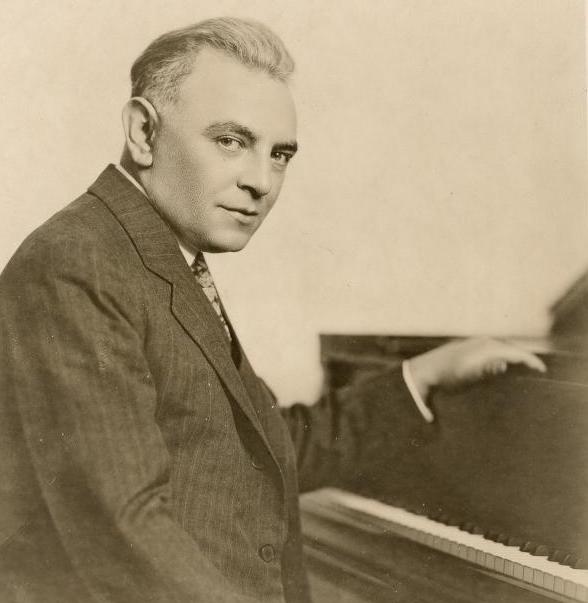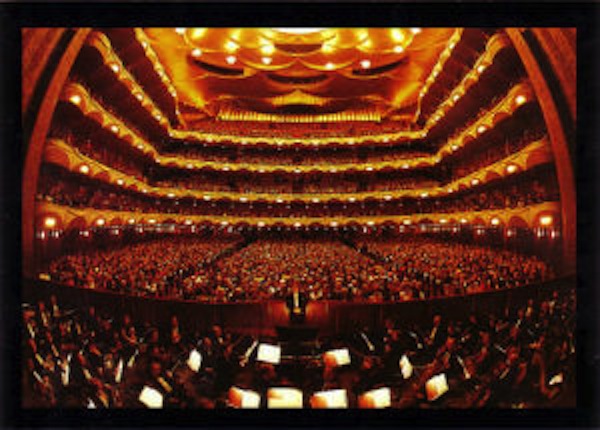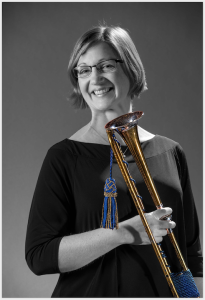The Well-Tempered Ear
Revisit historical and forgotten pianists with Mark Ainley’s ‘Piano Files’
2 Comments
PLEASE HELP THE EAR. IF YOU LIKE A CERTAIN BLOG POST, SPREAD THE WORD. FORWARD A LINK TO IT OR, SHARE IT or TAG IT (not just “Like” it) ON FACEBOOK. Performers can use the extra exposure to draw potential audience members to an event. And you might even attract new readers and subscribers to the blog.
By Jacob Stockinger
Who were Jascha Spivakosky, Gitta Gradova, Wilhelm Backhaus, Marcelle Meyer, Benno Moisiewitsch, Guitar Novaes (below), Eugen Indjic and Solomon — pianists from Russia/Ukraine, the United States, Germany, France, England, Brazil, Serbia/US and England, respectively?
Who was the Polish-American Josef Hofmann (below) and why did Sergei Rachmaninoff and others consider him the greatest pianist of his day while others considered him — and still do — dangerously radical?
Why was the early death of Dino Lipatti (below) such a major loss for classical music?
Most of all: How did these performers play the piano? What made them special? And what did they sound like?
Just ask Mark Ainley (below).
Ainley’s online Piano Files goes back to the earliest days of recordings and resurrects forgotten virtuosi on Facebook and the web.
His frequently posts entries — often on birthdays or anniversaries of deaths and certain concerts — offers concise, well researched and well-written summaries of their lives and careers.
And he finds the best surviving or available recordings by those pianists — usually on YouTube or reissued CDs and LOPs (below) — and links to them so you can hear differences and decide for yourself.
For example, The Ear found the 1930 recording of Chopin mazurkas that Polish pianist Ignaz Friedman (below) recorded (on YouTube at the bottom) quite revealing about historical stylistic and rhythmic differences — freer rubato and hands not always played together — compared to more mainstream interpretations by, say, Arthur Rubinstein or Vladimir Horowitz or Martha Argerich.
You can also learn much about the Big Names, including pianists who studied with students Chopin and Liszt. Ainley celebrates well-known piano virtuosi like Rubinstein, Horowitz, Gina Bachauer, Claudio Arrau, Jorge Bolet and Dame Myra Hess as well.
Ainley’s Piano Files save you a lot of time and searching on your own, and are available for you to subscribe to for downloads and sharing on Facebook:
https://www.facebook.com/ThePianoFilesWithMarkAinley
You can also go to his online website — which I prefer — and bookmark it if you like. There is a lot to explore, to read and listen to. The archives of past entries go back to March of 2011:
https://www.thepianofiles.com/author/Mark
And here is email if you have or a tip or suggestion for Ainley, or a reaction to his site and his written and recorded postings:
What do you think of the Piano Files?
Do you learn anything from them?
Will you use them and enjoy them?
The Ear wants to hear.
Tags: #FacebookPost, #FacebookPosting, 2011, America, American, anniversary, Apple, archives, Arrau, Arthur Rubinstein, Arts, Asia, asian, Bach, Beethoven, Benno Moisiewitsch, big, big names, Bing, birthday, blog, bookmark, Brazil, Carl Mikuli, Chamber music, Chopin, Classical music, classical pianist, classical piano, Claudio Arrau, composer, Concert, concerto, concise, dance, dangerous, death, Dinu Lipatti, download, Early music, effort, England, enjoy, Eugen Indjic, Euorpe, European, explore, Facebook, forget, forgotten, France, Frédéric Chopin, French, Germany, Gina Bachauer, Gitta Gradova, Google, Google Alert, Google Search, Great Britain, Greece, Greek, hands, historical, how, interpret, interpretation, Jacob Stockinger, Jascha Spivakosky, Johann Sebastian Bach, Jorge Bolet, Josef Hofmann, learn, listen, Liszt, loss, Ludwig van Beethoven, Marcelle Meyer, Mark Ainley, Martha Argerich, mazurka, Microsoft, Microsoft Bing, Mikuli, Mozart, Music, Myra Hess, names, neglect, neglected, North America, North American, ok, online, Orchestra, OS, Pianist, pianists, Piano, Piano Files with Mark Ainley, Poland, Polish, Rachmaninoff, Rachmaninov, radical, recording, reserach, rhythm, rubato, Russia, Russian, search, Serb, Serbia, share, Solomon, Sonata, South America, South American, Student, students, subscribe, surviving, Swiss, Switzerland, tag, The Ear, The Well-Tempered Ear, time, U.S., UK, Ukraine, Ukrainean, Ukrainian, United States, University of Wisconsin-Madison School of Music, University of Wisconsin–Madison, use, vintage, virtuoso, Vladimir Horowitz, Website, what, when, why, Wilhelm Backhaus, Wisconsin, Wolfgang Amadeus Mozart, writing, you, YouTube
Classical music: Musical America offers an exhaustive and helpful guide to international FREE streaming of operas, concerts and recitals, complete with program notes and links for listening
2 Comments
PLEASE HELP THE EAR. IF YOU LIKE A CERTAIN BLOG POST, SPREAD THE WORD. FORWARD A LINK TO IT OR, SHARE IT or TAG IT (not just “Like” it) ON FACEBOOK. Performers can use the extra exposure to draw potential audience members to an event. And you might even attract new readers and subscribers to the blog.
By Jacob Stockinger
During the COVID-19 pandemic, so much music is being streamed – through both live streaming and delayed pre-recorded streaming – that it can be hard to keep track of it all.
After all, the events are taking place locally, regionally, nationally and internationally.
How do you know what operas, orchestral concerts, chamber music concerts and individual recitals will take place? Where and when they will take place? What time is it in your time zone? And where do you find links to the performances, such as those by the famed Berlin Philharmonic (below)?
Getting so much information can be daunting.
But one loyal reader has helped The Ear by sending word about the most exhaustive compilation or online guide to FREE streaming of classical music events he has seen so far.
It is done by Musical America, and The Ear highly recommends it.
The Musical America website advises users that the guide will be updated twice weekly, and that Central European Time (CET) is six hours ahead of Eastern Daylight time (EDT) — or seven hours ahead of Central Daylight Time (CDT).
It also tells you how long many of the streamed videos are available for. A full 23 or 24 hours after the initial airing seems pretty average. But many appealing events – by some of the most prestigious organizations and individual performers in the world — will be available for the entire duration of the coronavirus pandemic.
You also get concise notes about the performers and the programs.
Today and tonight, for example, you could take in productions by the Berlin State Opera, the Zurich Opera and Ballet, the Metropolitan Opera (below) and the Vienna State Opera.
You could also take in the historical performances from the ongoing Cliburn Watch Party from the Cliburn International Piano Competition, and the twice weekly concerts by the six musically talented children in the acclaimed Kanneh-Mason family in England, now dubbed “The Von Trapp’s of classical music.” (Below is cellist brother Sheku Kanneh-Mason performing at the royal wedding of Prince Harry and Meghan Markle.)
And you could listen to award-winning cellist Alisa Weilerstein (below) will also discuss and play all 36 movements of the six solo cello suites by Johann Sebastian Bach that she recently recorded and just released.
The guide lists some of the more outstanding paid websites such as Medici TV but also lists events that took place much earlier but are still available for free watching and listening.
The guide has a link so that organizations can submit their own events for listing or users can make suggestions.
In short, the Musical America guide is extremely useful. You should probably bookmark it if you are planning to listen to a lot of musical events online through streaming.
But don’t take The Ear’s word for it. Take a look and check it out for yourself.
Here is a link: https://www.musicalamerica.com/news/newsstory.cfm?storyid=44766&categoryid=1&archived=0
What do you think of it?
Do you find it useful and think you will?
Do you see any major shortcomings or overlooked events?
Recommendations of your own?
The Ear wants to hear.
Tags: #BerlinPhilharmonic, #BerlinStateOpera, #BlogPost, #BlogPosting, #CelloMusic, #CelloSuite, #CentralDaylightTime, #CentralEuropeanTime, #ChamberMusic, #CliburnWatchParty, #COVID-19, #EasternDaylightTime, #EnglishMusicians, #FacebookPost, #FacebookPosting, #GreatBritain, #JacobStockinger, #JohannSebastianBach, #Kanneh-Mason, #LiveStreaming, #MediciTV, #MeghanMarkle, #MetropolitanOpera, #MusicalAmerica, #NewsProgram, #OrchestralMusic, #PandemicPlaylist, #PrinceHarry, #ProgramNotes, #RoyalWedding, #ShekuKanneh-Mason, #SoloCelloSuites, #TakePlace, #TheEar, #TheMet, #TheU.K., #TimeZone, #VanCliburn, #VanCliburnInternationalPianoCompetition, #ViennaStateOpera, #VonTrapp, #YouTubevideo, #ZurichBallet, #ZurichOpera, #ZurichSwitzerland, air, airing, appealing, audience, average, award, award-winning, Bach, Berlin Philharmonic, Berlin State Opera, blog, bookmark, brother, CDT, cellist, Cello, Central Daylight Time, Central European Time, CET, Chamber music, check, Cliburn Watch Party, compilation, Concert, concise, coronavirus, daunting, discuss, duration, Eastern Daylight Time, EDT, England, ensembles, entire, Europe, event, exhaustive, extreme, Facebook, Family, forward, free, Great Britain, groups, guide, individual, individuals, information, inital, initial, international, Jacob Stockinger, Johann Sebastian Bach, like, link, listing, livestream, local, look, loyal, medici.tv, Meghan Markle, Metropolitan Opera, movement, Music, Musical America, national, notes, online, opera, orchestral music, organizations, overlooked, pandemic, pandemic playlist, participant, party, paylist, performance, Pianist, Piano, play, post, posting, pre-recorded, prestigious, Prince Harry, program, program notes, reader, recital, recommendation, regional, royal, royalty, share, Sheku Kanneh-Mason, shortcoming, solo, Solo Cello Suites, stream, subscriber, suggestion, Suite, Switzerland, tag, take place, The Ear, the Met, time, time zone, tonight, TV, U.K., update, useful, user, Van Cliburn, Van Cliburn International Piano Competition, video, Vienna, Vienna State Opera, von Trapp, watch, wedding, week, when, where, winning, word, world, YouTube, Zurich, Zurich Opera
Classical music: The Madison Bach Musicians will perform its ninth annual Baroque Holiday Concert this coming Saturday night
Leave a Comment
PLEASE HELP THE EAR. IF YOU LIKE A CERTAIN BLOG POST, SPREAD THE WORD. FORWARD A LINK TO IT OR, SHARE IT or TAG IT (not just “Like” it) ON FACEBOOK. Performers can use the extra exposure to draw potential audience members to an event. And you might even attract new readers and subscribers to the blog.
By Jacob Stockinger
On this coming Saturday night, Dec. 7, the Madison Bach Musicians will present its ninth annual Baroque Holiday Concert (below, in 2014, in a photo by Kent Sweitzer).
The concert, using period instruments and historically informed performance practices, is again at the First Congregational United Church of Christ, 1609 University Ave., near Camp Randall Stadium. A pre-concert lecture by MBM founder and director Trevor Stephenson is at 7:15 p.m. followed by the concert at 8 p.m.
Advance-sale tickets are $35 at Orange Tree Imports and the Willy St. Co-op (East and West). Online advance-sale tickets are available at https://madisonbachmusicians.org. Tickets at the door at $38 for general admission and $35 for seniors. Student Rush tickets are $10 at the door and go on sale 30 minutes before the lecture.
The program features masterworks by Bach, Handel, Purcell and Torelli which, in their appealing Baroque way, explore the fusion of celebration, reflection and ultimate renewal often felt as the year’s end approaches.
MBM welcomes baroque trumpet virtuoso Kathryn Adduci (below), who will show how wonderfully vintage brass resounds in the magnificent Old World acoustics of the church.
Other performers are: Ariadne Lih, soprano (below); Lindsey Meekhof, alto; Ryan Townsend Strand, tenor; Michael Hawes, bass; Christine Hauptly Annin and Nathan Giglierano, violins; Micah Behr, viola; James Waldo, cello; and Trevor Stephenson, harpsichord.
Here are a couple of fun facts, provided by Stephenson, about each piece on the program.
Sound the Trumpet, by Henry Purcell (1659−1695, below)
1. This piece was composed in 1694, the year before Purcell died at the age of just 36. It is part of a birthday ode — Come Ye Sons of Art, Away! — for Queen Mary II of England, wife of King James II.
2. There is no trumpet in it at all, but the two voices implore the trumpet to play and they emulate trumpet-style writing with long, swelling notes mixed in with brilliant decorative flourishes.
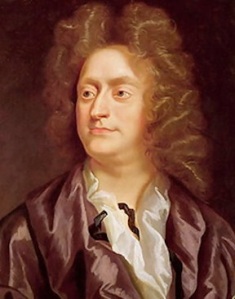
Trumpet Concert in D major by Giuseppe Torelli (1658−1709, below)
1. Torelli was one of the most prolific trumpet composers of all time.
2. The baroque trumpet has no valves and is designed to play in one tonality at a time. Favorite baroque keys were D major and C major.
Comfort Ye and Every Valley from Messiah, by George Frideric Handel (1685−1759, below)
1. After the instrumental Overture to Messiah, this Recitative and Aria are the work’s first sung pieces.
2. Handel was 56 years old when he composed Messiah in 1741 in London; the work was premiered, however, in Dublin in 1742, much to the chagrin of Handel’s librettist Charles Jennens.
Cantata BWV 51, Jauchzet Gott in allen Landen (Exult in God in Every Land), by Johann Sebastian Bach (1685−1750, below)
1. Composed around 1730, this is one of the very few Bach cantatas requiring only one singer.
2. In Bach’s Leipzig church, where the work was probably first heard, the soloist would have been either a male falsettist (or castrato) or an exceptionally skilled boy soprano.
Contrapunctus XIX and Vor deinen Thron tret ich hiermit (Before Thy throne I stand), from The Art of Fugue, BWV 1080, by J.S. Bach
1. According to Bach’s son Carl Philipp Emanuel (CPE), this fugue is the last piece his father wrote — though scholars hotly contest this claim.
2. In measure 195, Bach’s own name appears suddenly as a musical motive: B (B-flat in the German scale) – A – C – H (B natural) and the fugue has no ending but simply trails off in measure 239.
Grosser Herr, o starker König (Great Lord, O Powerful King) from Christmas Oratorio,BWV 248, by J.S. Bach
1. It features dance-like melodic figures in dialogue between trumpet and solo bass voice. (Heard in the YouTube video at the bottom.)
2. Text celebrates the birth of the savior, which makes the powers of the Earth irrelevant.
Cantata BWV 196, Der Herr denket an uns (The Lord thinks of us),by J.S. Bach
1. With its textual focus on blessings (from Psalm 115), the work is likely a wedding cantata.
2. Written probably when Bach was only 22 years old, the work is absolutely perfect in its structure and easy concision; its high-energy but quiet final cadence has a curiously modern, neo-Classical charm that might have made Stravinsky smile.
Chorale: Wohl mir, dass ich Jesum habe (What joy for me that I have Jesus),from Cantata, BWV 147, Herz und Mund und Tat und Leben (Heart and Mouth and Deed and Life), by J.S. Bach
1. The famous opening figure in the strings is really just Bach’s ingenious obligato lead-in to a chorale tune that parishioners in his church would have instantly recognized.
2. This work has enjoyed tremendous popularity as “Jesu, Joy of Man’s Desiring” since it was arranged for one and then two pianos in 1926 and 1934 respectively by English pianist Myra Hess. It has since been arranged for myriad combinations of instruments and voices.
Tags: #AltoSinger, #AriadneLih, #ArtofFugue, #BachCantata, #BaroqueMusic, #BaroqueOratorio, #BassSinger, #BlogPost, #BlogPosting, #BoySoprano, #BrassMusic, #CampRandall, #CampRandallStadium, #CarlPhilippEmanuelBach, #CharlesJennens, #CharlesJennins, #ChoralMusic, #ChristianChurch, #ChristianReligion, #ChristmasHoliday, #ChristmasOratorio, #CPEBach, #DublinIreland, #FacebookPost, #FacebookPosting, #FirstCongregationalUnitedChurchofChrist, #FourSeasonsofBuenosAires, #GeorgeFridericHandel, #GermanComposer, #GermanLanguage, #GiuseppeTorelli, #GuestArtist, #HenryPurcell, #HistoricallyInformedPerformancePractices, #HolidayConcert, #HolidayMusic, #HolidaySeason, #IgorStravinsky, #InstrumentalMusic, #italianComposer, #James Waldo, #JamesGiles, #JamesWaldo, #JesuJoyofMan'sDesiring, #JesusChrist, #JohannSebastianBach, #KathrynAdduci, #KingJames, #KingofEngland, #LeipzigGermany, #LondonEngland, #MadisonBaroqueMusicians, #MeadWitterSchoolofMusic, #MicahBehr, #MyraHess, #NathanGiglierano, #OldWorld, #PeriodInstruments, #QueenMary, #SeniorCitizen, #SopranoSinger, #TenorSinger, #TheEar, #TheLord, #TrevorStephenson, #TrumpetConcerto, #TrumpetMusic, #UniversityofWisconsin-Madison, #VocalMusic, #WillySt.Coop, #WillySt.CoopWest, #WillyStreetCo-op, #WillyStreetCoopEast, #YouTubevideo, acoustics, alto, appealing, aria, Ariadne Lih, arrangement, Art of Fugue, Arts, Bach, Bach cantata, Baroque, Baroque music, bass, biirth, birthday, blog, boy, boy soprano, brass, brass music, brilliant, British, Camp Randall, Camp Randall Stadium, Cantata, Carl Philipp Emanuel Bach, castrato, celebration, cellist, Cello, Charles Jennens, charm, choral music, Chorale, Christ, Christmas, Christmas Oratorio, church, claim, Classical music, composer, Concert, concerto, concise, conductor, contest, counterpoint, CPE Bach, decorative, deed, dialogue, director, Dublin, Early music, Earth, east, end, ending, energy, England, English, explore, Facebook, fact, falsetto, father, figure, First Congregational United Church of Christ, flourishes, forward, founder, fugue, fusion, George Frideric Handel, German, Giuseppe Torelli, God, guest artist, Handel, harpsichord, heart, Henry Purcell, historically informed performance practices, Holiday, holiday concert, Igor Stravinsky, ingenious, instrument, instrumental, instruments, Italian, Italy, J.S. Bach, Jacob Stockinger, James, Jesu Joy of Man's Desiring, Jesus Christ, Johann Sebastian Bach, Kathryn Adduci, key, keys, King, last, lecture, Leipzig, librettist, life, like, link, London, long, Lord, Madison, Madison Baroque Musicians, magnificent, male, Mary, masterwork, Mead Witter School of Music, Messiah, Micah Behr, modern, motive, mouth, Music, musical, Myra Hess, Nathan Giglierano, neo-Classical, notes, ode, Old World, online, opening, oratorio, Orchestra, Overture, parishioners, perfect, period instruments, Pianist, Piano, Pianos, play, popularity, post, posting, premiere, program, prolific, queen, Queen Mary, recitative, reflection, Religion, renewal, resound, rush, savior, scholar, Season, senior, senior citizen, share, singer, skill, smile, solo, soloist, son, soprano, Sound, Stravinsky, structure, Student, swelling, tag, tenor, text, The Ear, throne, ticket, tonality, Torelli, Trevor Stephenson, Trumpet, trumpet concerto, tune, United States, University of Wisconsin-Madison School of Music, University of Wisconsin–Madison, UW-Madison, valve, valveless, vintage, Viola, Violin, violinist, violist, virtuoso, vocal music, voice, websote, wedding, west, Willy Street Co-op, Willy Street Coop, Willy Street Coop East, Willy Street Coop West, Wisconsin, wrote, year, YouTube
- May 2024
- April 2024
- March 2024
- February 2024
- January 2024
- December 2023
- November 2023
- October 2023
- September 2023
- August 2023
- July 2023
- June 2023
- May 2023
- April 2023
- March 2023
- February 2023
- January 2023
- December 2022
- October 2022
- September 2022
- June 2022
- May 2022
- April 2022
- March 2022
- July 2021
- June 2021
- May 2021
- April 2021
- March 2021
- February 2021
- January 2021
- December 2020
- November 2020
- October 2020
- September 2020
- August 2020
- July 2020
- June 2020
- May 2020
- April 2020
- March 2020
- February 2020
- January 2020
- December 2019
- November 2019
- October 2019
- September 2019
- August 2019
- July 2019
- June 2019
- May 2019
- April 2019
- March 2019
- February 2019
- January 2019
- December 2018
- November 2018
- October 2018
- September 2018
- August 2018
- July 2018
- June 2018
- May 2018
- April 2018
- March 2018
- February 2018
- January 2018
- December 2017
- November 2017
- October 2017
- September 2017
- August 2017
- July 2017
- June 2017
- May 2017
- April 2017
- March 2017
- February 2017
- January 2017
- December 2016
- November 2016
- October 2016
- September 2016
- August 2016
- July 2016
- June 2016
- May 2016
- April 2016
- March 2016
- February 2016
- January 2016
- December 2015
- November 2015
- October 2015
- September 2015
- August 2015
- July 2015
- June 2015
- May 2015
- April 2015
- March 2015
- February 2015
- January 2015
- December 2014
- November 2014
- October 2014
- September 2014
- August 2014
- July 2014
- June 2014
- May 2014
- April 2014
- March 2014
- February 2014
- January 2014
- December 2013
- November 2013
- October 2013
- September 2013
- August 2013
- July 2013
- June 2013
- May 2013
- April 2013
- March 2013
- February 2013
- January 2013
- December 2012
- November 2012
- October 2012
- September 2012
- August 2012
- July 2012
- June 2012
- May 2012
- April 2012
- March 2012
- February 2012
- January 2012
- December 2011
- November 2011
- October 2011
- September 2011
- August 2011
- July 2011
- June 2011
- May 2011
- April 2011
- March 2011
- February 2011
- January 2011
- December 2010
- November 2010
- October 2010
- September 2010
- August 2010
- July 2010
- June 2010
- May 2010
- April 2010
- March 2010
- February 2010
- January 2010
- December 2009
- November 2009
- October 2009
- September 2009
- August 2009
Archives
- 2,493,299 hits
Blog Stats
Recent Comments
| welltemperedear on What do you think of the… | |
| Scott on What do you think of the… | |
| welltemperedear on Yunchan Lim’s Chopin etudes ar… | |
| bratschespeilerin on What do you think of the… | |
| MARVIN P WICKENS on Yunchan Lim’s Chopin etudes ar… |
Tags
#BlogPost #BlogPosting #ChamberMusic #FacebookPost #FacebookPosting #MeadWitterSchoolofMusic #TheEar #UniversityofWisconsin-Madison #YouTubevideo Arts audience Bach Baroque Beethoven blog Cello Chamber music choral music Classical music Compact Disc composer Concert concerto conductor Early music Facebook forward Franz Schubert George Frideric Handel Jacob Stockinger Johannes Brahms Johann Sebastian Bach John DeMain like link Ludwig van Beethoven Madison Madison Opera Madison Symphony Orchestra Mead Witter School of Music Mozart Music New Music New York City NPR opera Orchestra Overture Center performer Pianist Piano post posting program share singer Sonata song soprano String quartet Student symphony tag The Ear United States University of Wisconsin-Madison School of Music University of Wisconsin–Madison Viola Violin vocal music Wisconsin Wisconsin Chamber Orchestra wisconsin public radio Wolfgang Amadeus Mozart YouTube